A lot of people want to get into beauty blogging, but they don’t know where to start. If you’re one of those people, then this guide is for you. This guide will show you how to start a beauty blog & make money online in 2026.
There are a few things you need to do before you can start a successful beauty blog. You need to define your goals, choose a niche, pick & register a domain name, and set up WordPress.
Once you’ve done all of that, you can start writing & publishing blog posts. And finally, once your blog is up and running, you can start promoting it and monetizing it to make money. We will show you how to be a successful beauty blogger without any technical knowledge.
So let’s get started with your blogging journey!

How to Start a Beauty Blog in 7 Steps
- Define Your Beauty Blogging Goals
- Choose a Beauty Niche
- Pick & Register a Blog Domain Name
- Setup WordPress
- Write & Publish Blog Posts
- Promote Your Beauty Blog
- Monetize & Make Money
1. Define Your Beauty Blogging Goals
The first step to starting a beauty blog is to define your goals. What do you want to achieve with your blog?
- Do you want to use it as a platform to share your passion for makeup and skincare?
- Do you want to use it to build a personal brand?
- Do you want to use it to make money?
Your goals will dictate the direction of your blog, so it’s important to choose them carefully.
What is a Beauty Blog?
A beauty blog is a blog that focuses on topics related to beauty, such as makeup, skincare, hair care, and fashion.
Why Start a Beauty Blog?
There are many reasons to start a beauty blog. Some people do it to share their passion for beauty with the world. Others do it to build a personal brand. And some people do it to make money.
Whatever your reason for starting a blog, you can achieve your goals if you put in the work.
The benefits of starting a beauty blog include:
- Share your passion with the world
- Build a personal beauty brand
- Get the opportunity to make money blogging
How much money can you make from Beauty blogging?
Check out the blog earning calculator to estimate your blog income potential. The median ad income of a blog with 100 posts is $2815 per month. How much money you make will depend on several factors, including the amount of traffic your blog gets, how many posts you have published, and the products you promote as an affiliate. The beauty blog Hot Beauty Health made $9655.31 in a single month.
2. Choose a Beauty Niche
The next step is to choose a niche for your blog. A niche is a specific topic that you’ll be writing about on your blog.
Why choose a niche?
You should choose a specific niche for your beauty blog because it will make it easier to attract an audience and stand out from the competition.
When you write about a specific topic, you can become an expert in that field and build a loyal following of readers who are interested in what you have to say.
Focusing on a specific niche will help you rank faster in search engines.
Finding Your Ideal Niche
There are many different niches within the beauty industry, such as makeup, skincare, hair care, and fashion.
When choosing a niche for your beauty blog, it’s important to pick one that you’re interested in and passionate about. It’s also important to choose a niche that has a lot of growth potential.
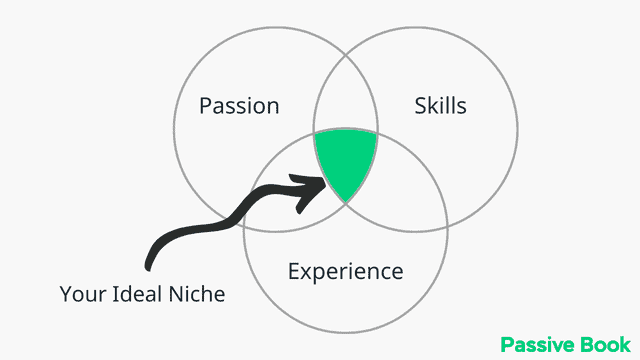
Here are a few beauty niche ideas for your beauty blog:
- Makeup
- Skincare
- Hair care
- Fashion
- Beauty products
- Personal styling
- Creams and Cosmetics
- Pedicure
- Manicure
- Beauty routines
- Body care
- Nail Arts
- Beauty Trends
- High-End Beauty
- Luxury Beauty
- Beauty for Beginners
- Beauty for Teenagers
- Beauty for Adults
- DIY beauty
- Eyelashes
- Hair extensions
- Beauty tips for different skin tones
- Natural beauty
- Beauty product reviews
- Homemade beauty treatment
- Makeup supplies
- Jewelry
- Celerity makeup looks
- Nail Polish
- Affordable Fashion
- Budget-Friendly Beauty
- Vegan & Cruelty-Free Beauty
- Healthy Recipes
- Minimalist Beauty
If you want to start a beauty and fashion blog, also check out our guide on how to start a fashion blog.
Some niches are more popular than others, so it’s important to do your research to find one that will be profitable.
Examples of Beauty Blogs
Sometimes looking at other beauty blogs will help inspire ideas of your own. Here are some of the more popular beauty blogs:
[auto-list-number] British Beauty Blogger
The blog provides honest reviews about new beauty products. It also has how-to guides and articles about the latest makeup trends.
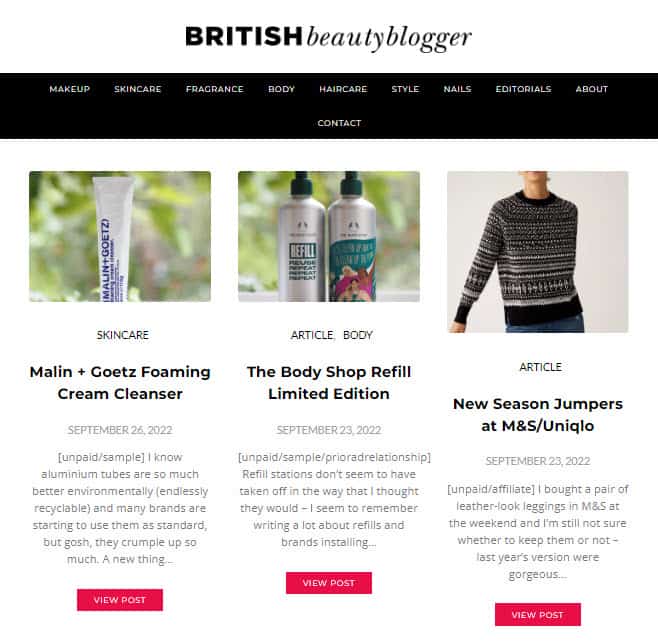
[auto-list-number] Byrdie
Byrdie is a prominent and influential beauty blog that stands at the forefront of the beauty and skincare industry. With a team of passionate beauty enthusiasts and experts, Byrdie provides an all-encompassing platform for beauty aficionados to explore and embrace the latest trends, tips, and insights. The blog covers a diverse range of topics, including skincare routines, makeup tutorials, haircare secrets, wellness advice, and product reviews.

[auto-list-number] Beautylish
Beautylish is an American blog that provides beauty tips, tricks, and advice. It also has product reviews and interviews with industry experts.
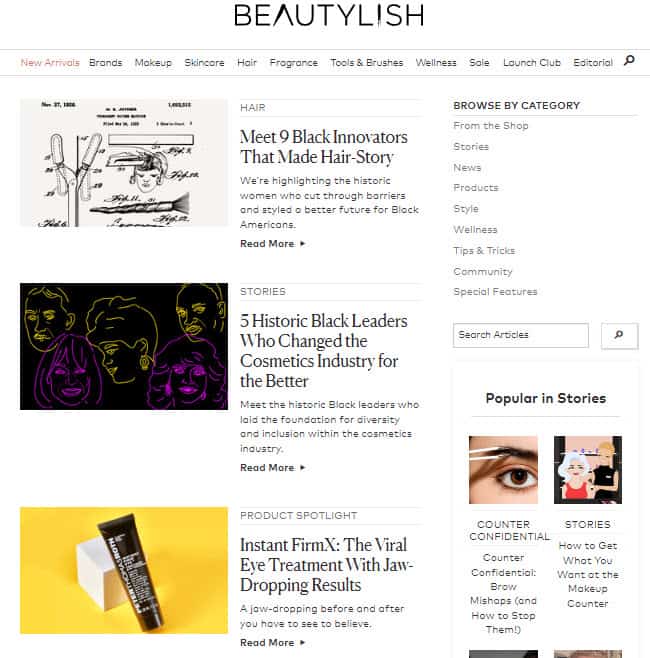
[auto-list-number] Hot Beauty Health
This blog is all about natural and homemade beauty treatments. It includes recipes, How-tos, and product reviews.
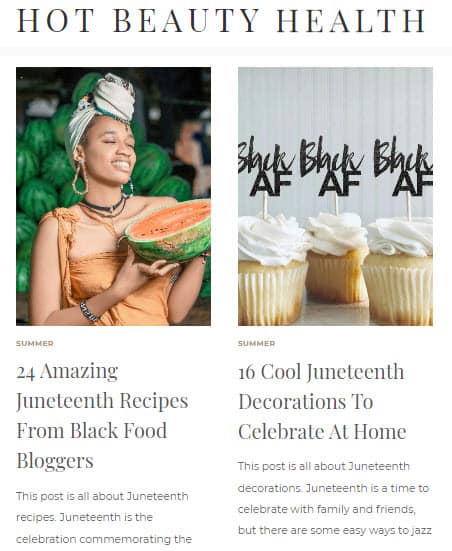
[auto-list-number] Lisa Eldridge
Lisa Eldridge is a British makeup artist who has her own blog and YouTube channel. She provides How-tos, product reviews, and interviews with industry experts.

[auto-list-number] Hello Glow
Hello Glow is a blog by Stephanie that combines simple beauty DIYs and yummy recipes to help you glow inside and out.
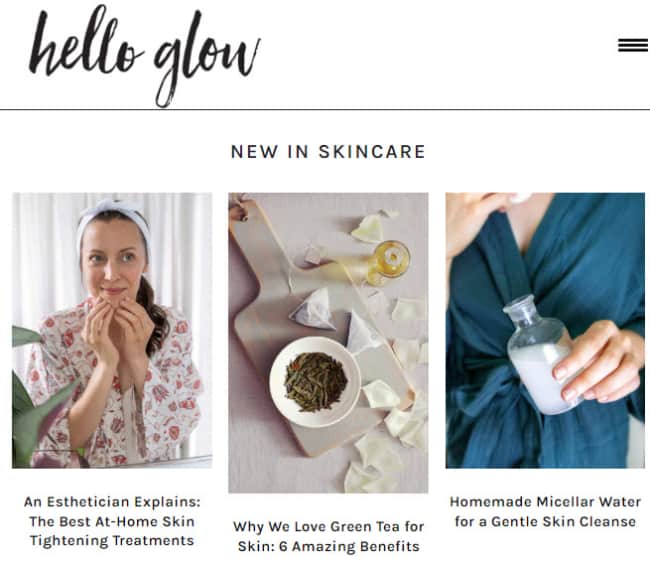
3. Pick & Register a Blog Domain Name
Once you have chosen your niche, it is time to brainstorm a few names for your beauty blog.
We recommend you keep your blog’s name to two words (Example: Hello Glow). One of the two words should be a keyword from your niche. The other word can be something that makes your website brandable. For example, our blog teaches people how to make passive income, so we have named it Passive Book.
Here are some of the words that you can mix and match into your blog name:
- Beauty
- Makeup
- Skin
- Secrets
- Gleam
- Sparkle
- Chic
- Glam
- Allure
- Elegance
- Glamor
- Charm
- Grace
- Radiant
- Look
- Powder
- Palette
- Spritz
- Face
- Blush
- Lipstick
- Nail
- Swatch
- Collection
- Counter
Use a Business Name Generator to brainstorm the name of your blog.
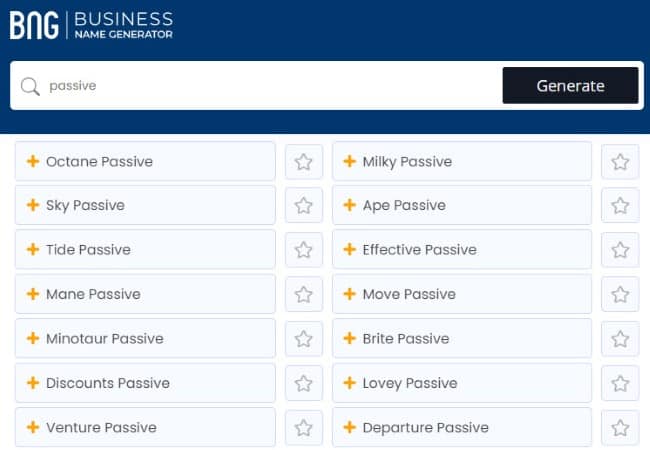
You can also use your own name for your blog. But if you ever plan to sell your website in the future, it is much more difficult to transfer your brand to the buyer when it is your name.
Check Domain Name Availability
Once you have come up with a few name ideas, it’s time to check if the domain is available.
A blog’s domain name is the web address (URL) of your website. For example, the domain name of our website PassiveBook is passivebook.com. Your domain name is the name you chose for your blog followed by .com.
You will also want to ensure all the social media handles are still available.
You can use Namechk to check the availability of both your domain name and social media handles.
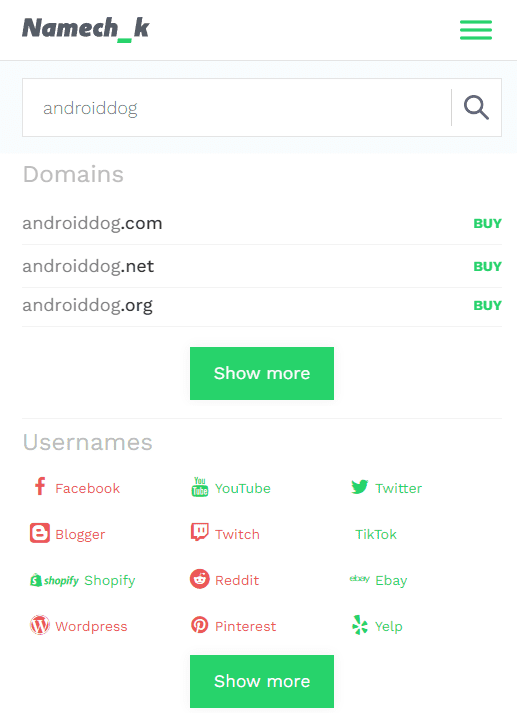
Here are a few things to keep in mind when selecting a domain name:
- Choose a .com domain name. 86% of the internet uses .com, so your visitors are likely to try visiting your blog by typing .com. Avoid other extensions like .net or .org.
- Don’t include hyphens and numbers.
- Do not use words with multiple spellings (for example colour vs color).
- Shorter domain names are better. Try to keep it under 12 characters.
- Spelling & Pronunciation should be easy and intuitive.
- It should be easy to remember.
- Avoid words that can be misread together. For example, therapistjohn.com can be read as Therapist John or The Rapist John.
- Make sure it’s not trademarked or copyrighted by someone else. The AI writing software Jarvis.ai had to rebrand to Jasper.ai because Marvel sued them for the Iron Man reference. Lawsuits will happen once your blog is established.
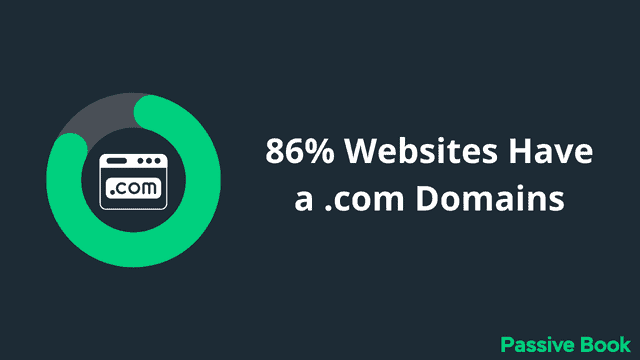
Register a Domain Name
Once you decide your domain name it is time to register it.
You should register your domain with NameCheap because you will get domain privacy for free. Other providers charge $12 per year for domain privacy. Without domain privacy, your name, home & email address will be accessible to the public.
Step 1: Go to NameCheap. Enter your domain name with the .com extension.
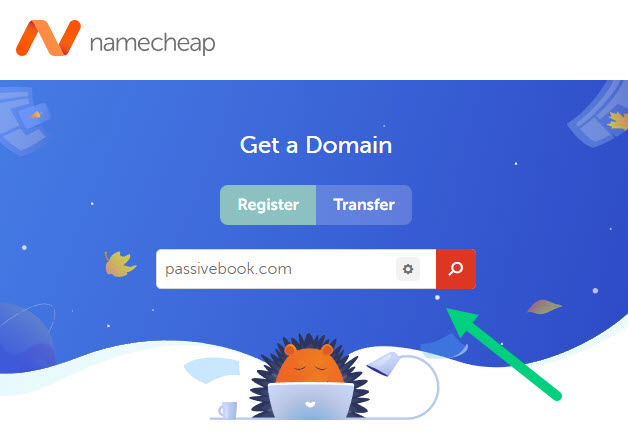
Step 2: Select the .com extension and click the Add to Cart button.
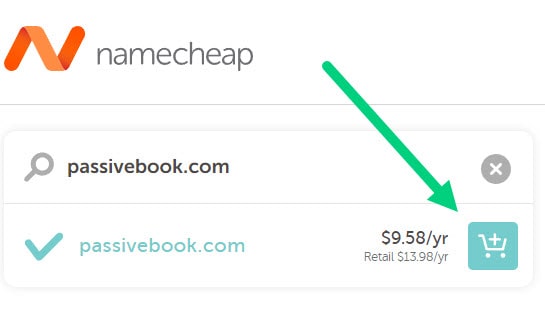
Step 3: After adding the domain to the cart, click on the Checkout button.
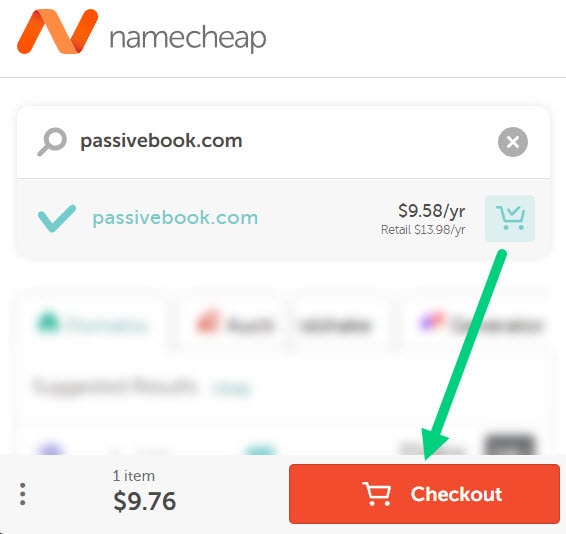
Step 4: Enable Domain Privacy that comes for free along with auto-renew. You don’t need any other paid addon.
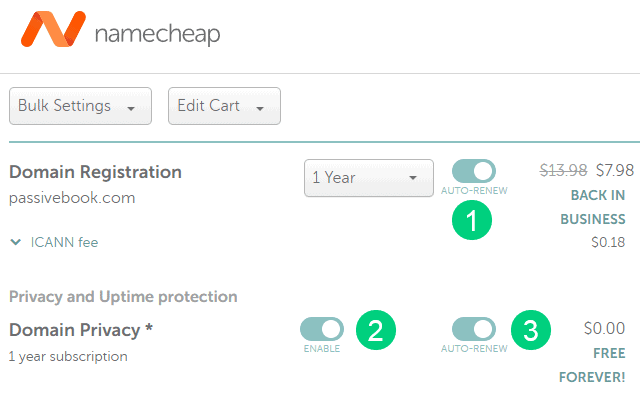
Step 5: Click on Confirm Order. Pay to complete your purchase.

Step 6: Log in to Namecheap and click on Domain List ❶ in the left sidebar and then click Manage ❷ next to the domain you just purchased.
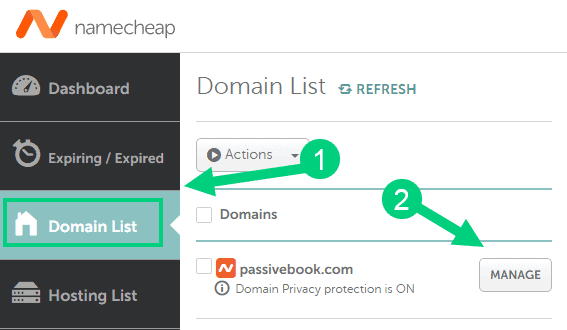
Step 7: Under the Nameservers section, select “Custom DNS” from the dropdown ❶. Then enter the following two nameservers ❷ ns1.bluehost.com and ns2.bluehost.com as shown in the image. Then click the green tick ❸ to save. If you use a hosting provider other than Bluehost, enter their nameserver values in this step instead.
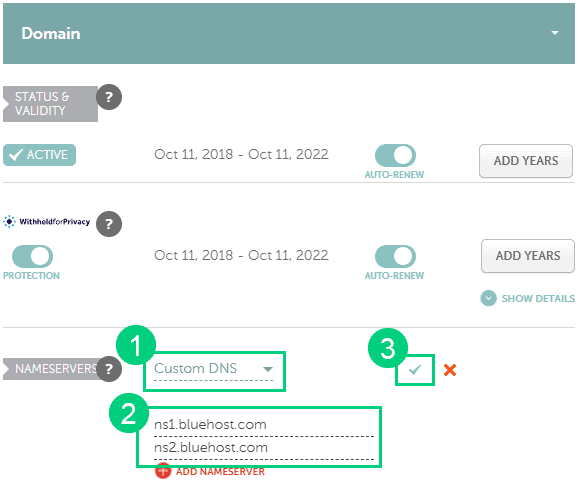
Can I get a free domain name?
Your web hosting provider might give you a free domain name for one year but they charge $12 for domain privacy which is free in Namecheap. From the second year, you will pay for both the domain and privacy which will cost you more than $20+. So it is cheaper to just register your domain with Namecheap from the beginning. Also using different companies for web hosting and domain registration will allow you to easily switch your blog host later without transferring domains.
Can I change the name of my blog later?
You will lose your search engine rankings if you change your blog’s name once it gets links from other websites. It will take as long as a year or more for you to regain the lost traffic. It is possible to mitigate problems by having proper redirects. But you will have to renew both your old and new domains every year. So try to avoid changing your blog’s name once it is established.
4. Setup WordPress
The next step is to get your beauty blog up and running in WordPress. If you don’t know what WordPress is, it is a content management system (CMS) that allows you to easily create, edit and publish content on your website without having to learn to code.
Why Choose WordPress.org?
There are many blogging platforms but the self-hosted wordpress.org powers 70% of blogs on the internet. 42% of all websites on the internet use WordPress.

Some of the advantages of using WordPress are:
- It is free to use. You just need to pay for your hosting & domain name.
- You own your content. If you ever want to move your blog to another platform, you can do so without losing any content.
- It is very easy to use and you don’t need to be a tech genius to get started.
- It is very customizable. You can change the look and feel of your blog with just a few clicks.
- There is a huge community of WordPress users and developers who can help you if you ever run into any problems.
WordPress.org vs WordPress.com
There are two versions of WordPress – WordPress.org and WordPress.com.
WordPress.com is a blogging platform where you can create a blog for free. But there are some limitations. For example, you cannot install plugins or themes.
We recommend using WordPress.org because it gives you complete control over your blog. It is also free to use, you just need to pay for your hosting & domain name.
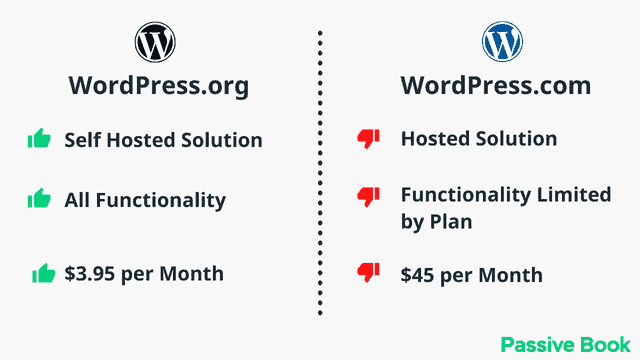
If you are serious about blogging and want to make money from your blog, then we recommend using WordPress.org.
Why Avoid Free Blogging Platforms
There are many free blogging platforms like Blogger, Tumblr, Medium etc. But we don’t recommend using them for a few reasons.
You don’t own your content. If the platform bans you tomorrow, your blog will disappear with it. Thousands of Blogger blogs get banned for no reason every day and the owner of the blog will only see the following screen without any way to retrieve the posts that they have published. So you can lose years of work overnight.

It is also very difficult to make money from free blogging platforms. Your blog will not typically rank in the search engines.
How much does it cost to start a beauty blog?
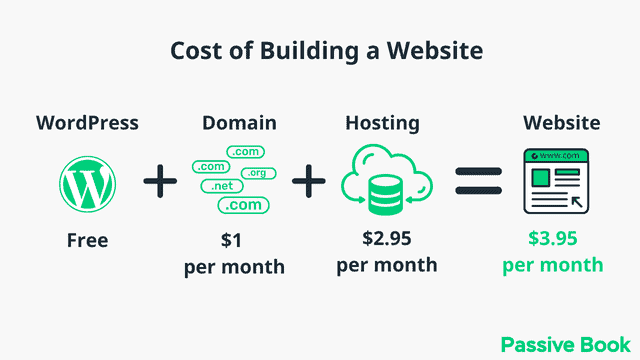
It will cost you $2.95 per month to host your WordPress beauty blog in BlueHost. A domain will cost you $12/year. So that is a total of $3.95 per month, which is less than the price of Netflix for all the unlimited features that a self-hosted WordPress blog has to offer.
What to do if you already have a free blog?
If you already have a blog on a free platform and want to move it to WordPress, then we recommend using a free import plugin to move all your posts.
Install WordPress in Hosting
You need web hosting to set up WordPress. A web host is a company that provides space on its servers for you to store your website files.
When someone visits your blog, data is transferred from your web hosting server to your visitor’s browser.
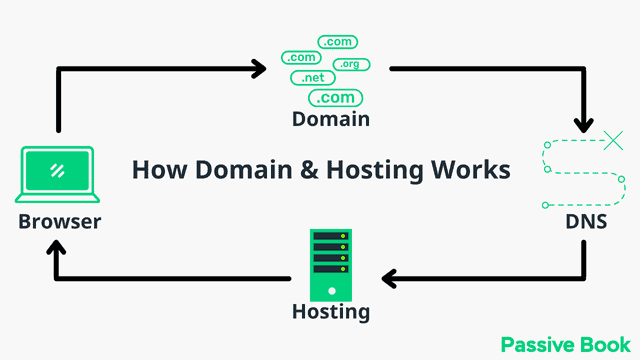
For this guide, we will use BlueHost as our web host. It is a cheap hosting that is extremely easy for beginners to set up. If you use any other web host, the steps will be the same but the user interface may be slightly different.
1. Go to BlueHost using this link to get a special discount. Select WordPress > WordPress Hosting from the top menu.
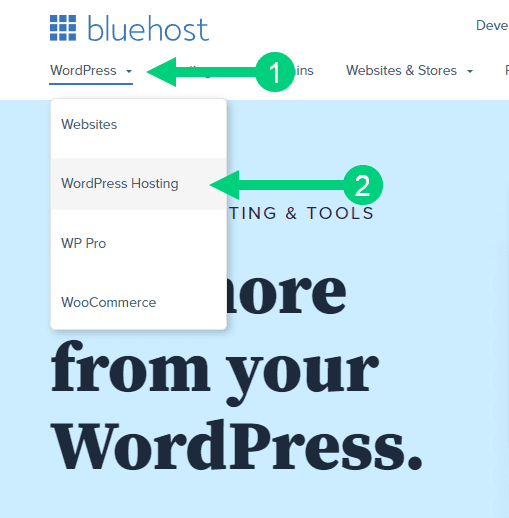
2. Click on the button you see on this page and you will be taken to the pricing section.
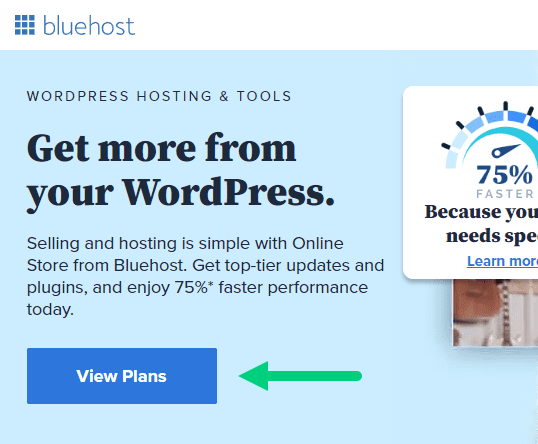
3. Select the Basic Plan. You can upgrade to a different hosting plan as you grow.

4. If you already have a domain name that you purchased with Namecheap you can put that in the “Use a domain you own” ❶ section. If you don’t have a domain name yet, choose the “Create a New Domain” ❷ to purchase a new domain.
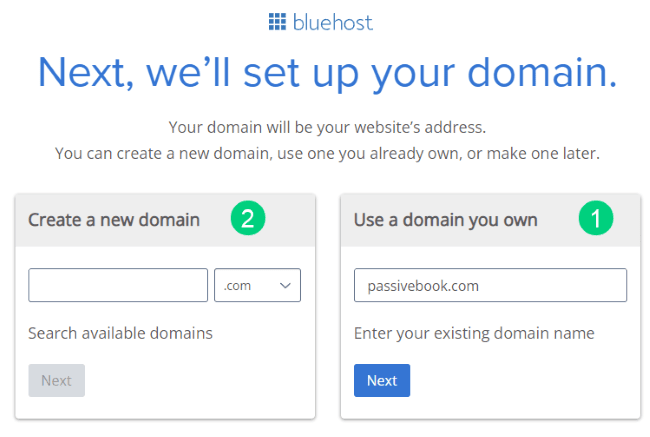
5. In the next screen, enter your information. Uncheck all package extras. If you purchase your domain through Bluehost instead of Namecheap, you may want to enable Domain Privacy. You won’t see the Domain Privacy option if you bought your domain through Namecheap. Namecheap will give you this Domain Privacy for free.
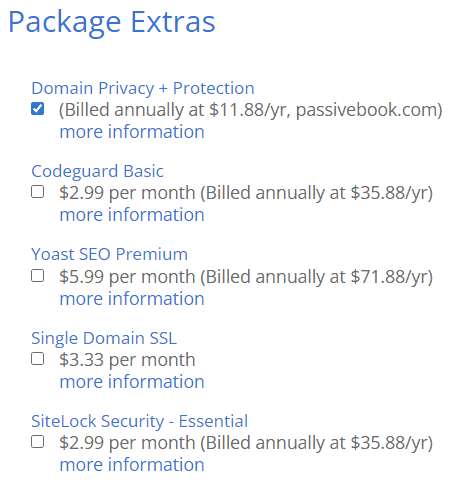
6. Once you have successfully paid, you will be prompted to set a password. Click on the “Create your Password” button.
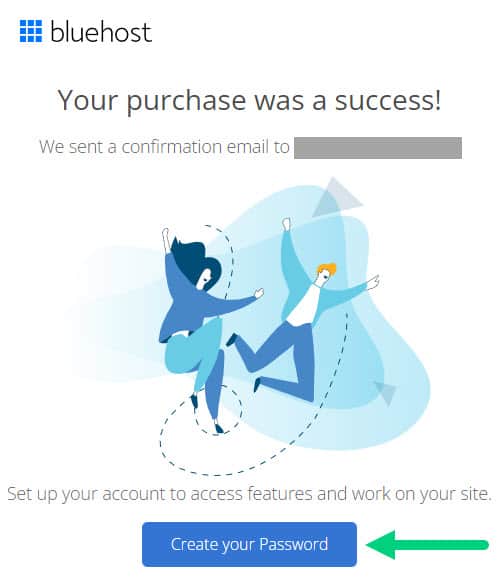
7. Enter your password and create your account. If you lose this password, you can reset it.
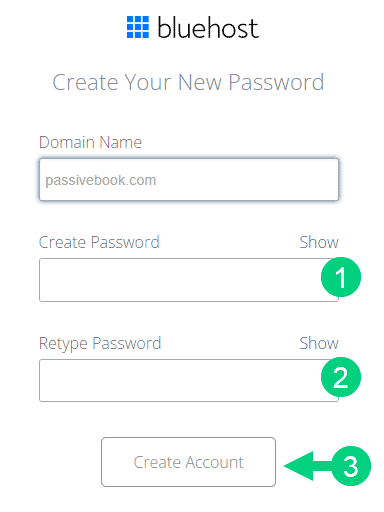
8. After you set your password, log in to Bluehost.
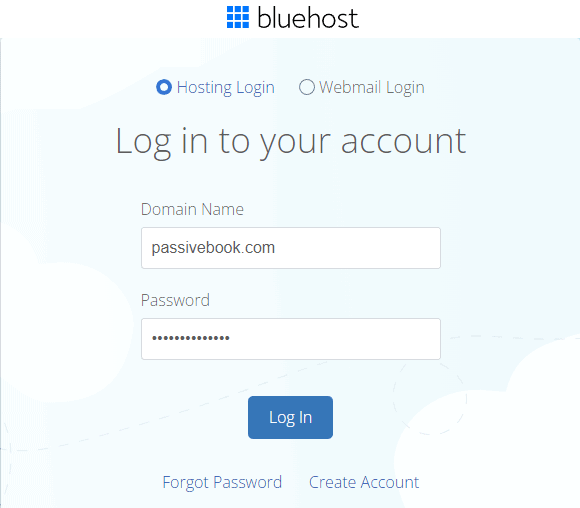
9. Click on the Create your website button on the following screen. This will start a Bluehost Wizard, just click Skip this step wherever possible.

10. On the following page, click “No help needed” or “Skip this step”. We don’t want Bluehost to limit our customization options.
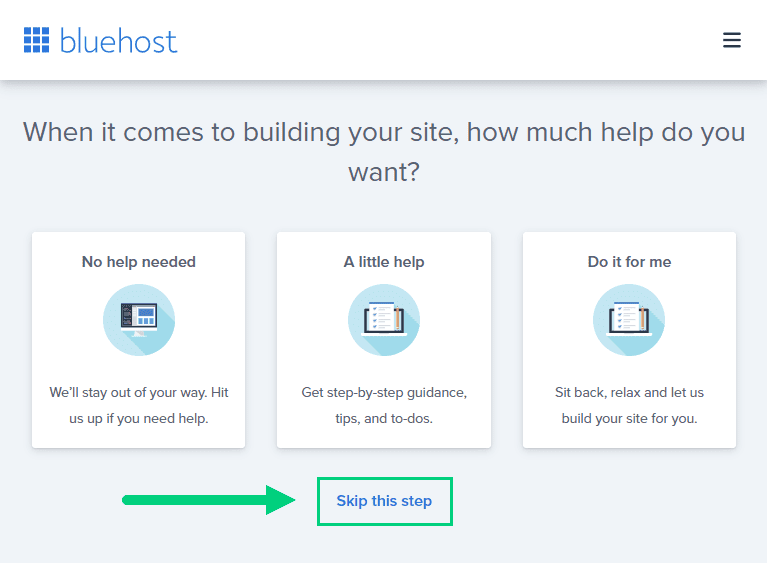
11. On the next page, you will be asked about the purpose of your website. You can choose from any of the available options.
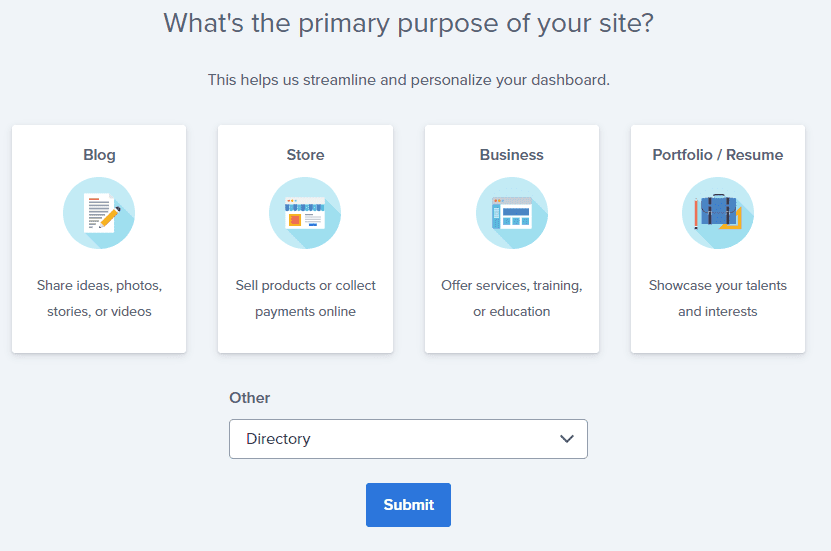
12. On the next page, click Skip this step.
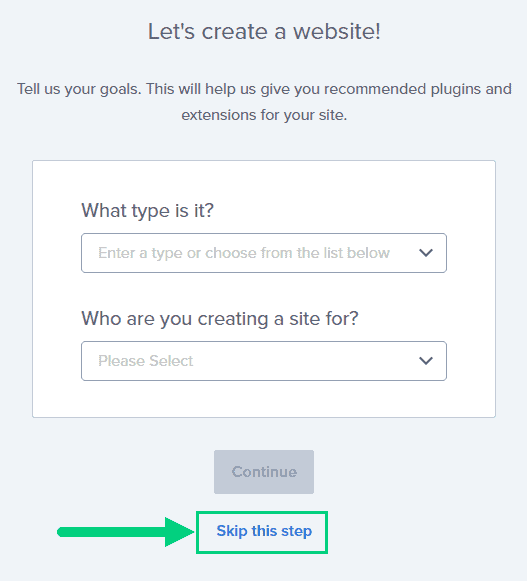
13. On the following page, enter the blog’s name and tagline. You can change this later so feel free to click “Skip this step” or enter something as a placeholder and click Continue.
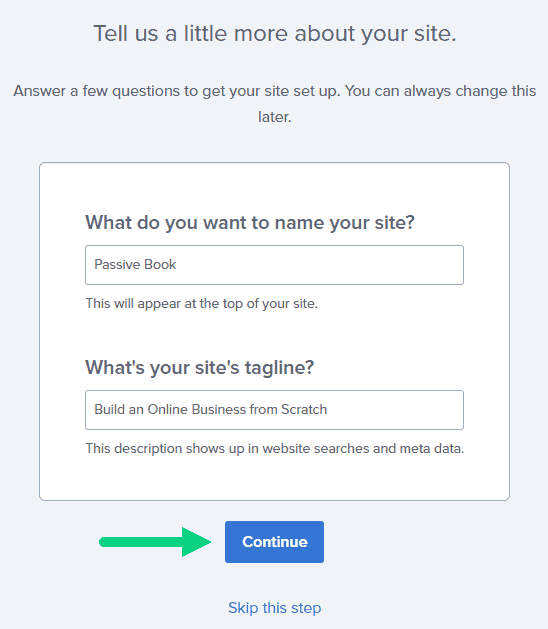
14. Finally you will be asked how you want to build your website. Choose “Limitless customization” to have all the options.

15. You can see your blog by going to yourdomain.com. Go to the Bluehost dashboard and click on the My Sites tab ❶ in the left sidebar and click on the “Manage site” button ❷.
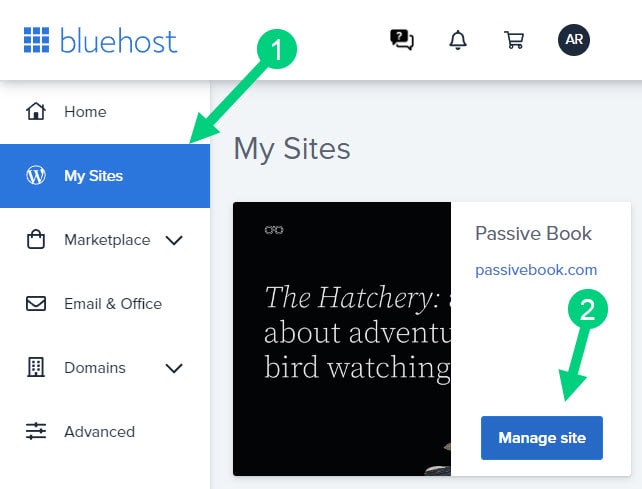
16. Your WordPress site has separate login credentials different from the ones you use to log into Bluehost. You can use this to log in to the WordPress dashboard directly without logging into Bluehost. To get this:
❶ Click on Users on top.
❷ You will be able to see your username and email that you can use to log in to WordPress.
❸ If you click on the three dots you will see the option to Reset your password. ❹
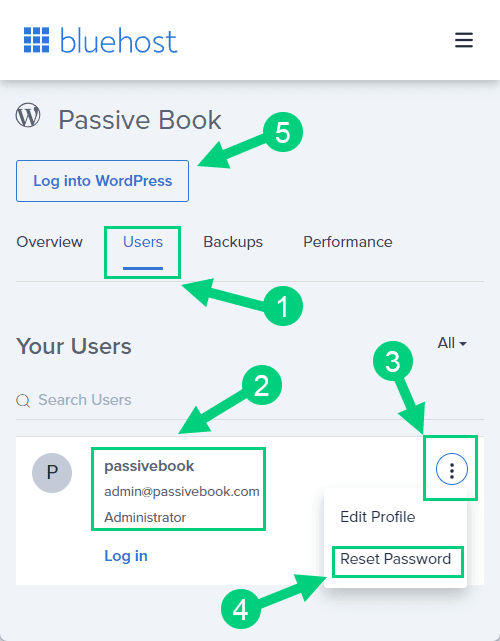
You can log into WordPress from the Bluehost dashboard by clicking the Log in to WordPress button ❺. But it is not recommended you rely on this as your primary login method because you will get locked out of your site if you ever change hosting providers.
17. You will be taken to the WordPress dashboard where you can reset your password ❶. If you don’t like the username Bluehost created for you, you can Add a New User ❷.

18. If you are adding a new user make sure you specify the user role as Administrator ❶. You can log in as the new user and safely delete the default user created by Bluehost.
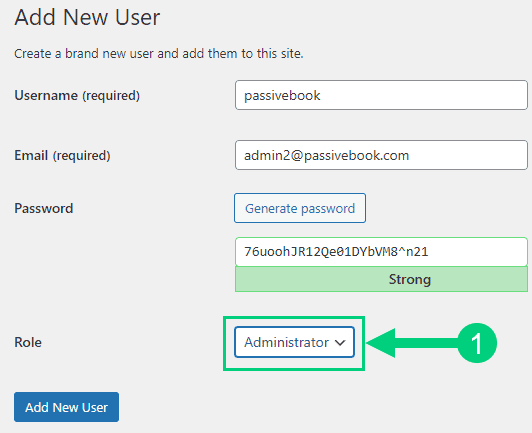
Congratulations! You have successfully set up WordPress.
Configure WordPress
Now that you have the basic version of WordPress installed, it is time to customize it to make it look and feel the way you want.
Login to WordPress Dashboard
Visit yourdomain.com/wp-admin to access the WordPress dashboard.
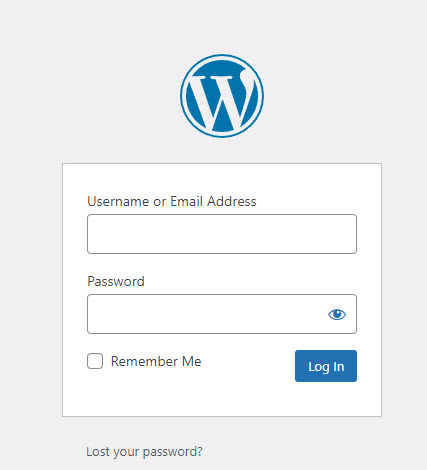
The WordPress Dashboard is the control center for your WordPress site. It allows you to easily manage your blog posts, pages, comments, users, and other options. You can also install plugins and themes from the WordPress dashboard.
Use the Email and Password you provided during installation to log in to your WordPress dashboard. If you don’t have a password, use the “Lost your password?” link on this page to generate a new password.
Install WP Themes
A WordPress Theme is a collection of files that controls the look and feel of your website. When you change your theme, it completely changes the design and layout of your website.
There are thousands of free and premium WordPress themes available. You can find free themes on the WordPress.org theme repository, or purchase premium themes.
Your new WordPress blog will be installed with a default blog theme that doesn’t look very great.
To install a new WordPress Theme:
Go to Appearance > Themes > Add New in your WordPress dashboard.
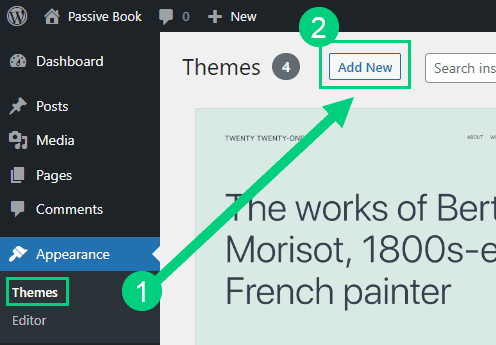
Use the search to find a theme that you like ❶. Before you install the theme, you can see a demo of the theme and learn about its features from the preview screen ❷. If you like the theme, you can install it by clicking the install button ❸. You can also upload a theme from a file on your computer ❹.
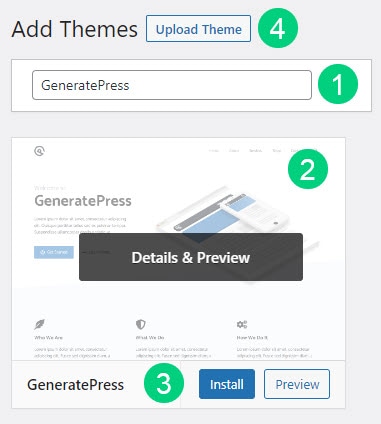
Once installed, click the Activate button to enable the theme.
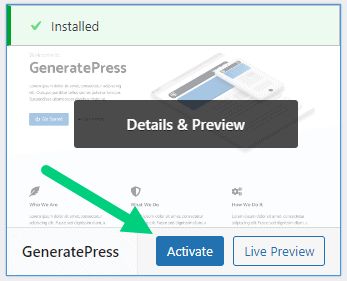
Although you can use a free theme (there are thousands of free themes available), we recommend using a premium theme.
Premium themes not only reduce your website’s load time but also help you customize your website to your heart’s desire.
Here are the premium themes we recommend:
There are also several themes custom-made for beauty blogs. These themes tend to be bloated with poor code which will slow down the performance of your website. We suggest getting one of our recommended themes for a fast website with unlimited customization possibilities.
Install WP Plugins
A WordPress Plugin adds new features and functionality to your WordPress blog. There are thousands of free and premium WordPress plugins available.
You can find free plugins on the WordPress.org plugin repository, or purchase premium plugins from companies online.
Too many wordpress plugins can slow down your blog site. So before you install new plugins, it will be worth clearing out any existing plugins that your hosting provider installed by default.
Plugins first need to be deactivated before they can be deleted.
❶ Go to WP Admin > Plugins > Installed Plugins
❷ Click on the checkbox to select all plugins.
❸ Select Deactivate from the drop-down.
❹ Click Apply.
❺ Repeat the above steps but select “Delete” instead of “Deactivate” from the dropdown in ❸ to delete all the deactivated plugins.
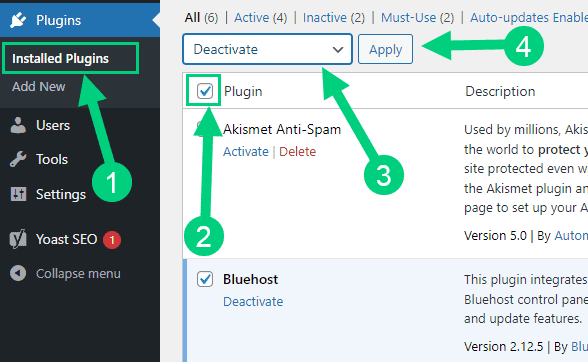
To install new plugins go to the WP Admin > Plugins > Add New.
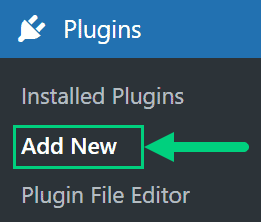
On the plugins page:
❶ Search for the plugin you want in the search bar
❷ Click Install Now. Once you install the plugin, you must also activate the plugin for it to be enabled.
❸ If you are installing a paid plugin you can upload the plugin instead.
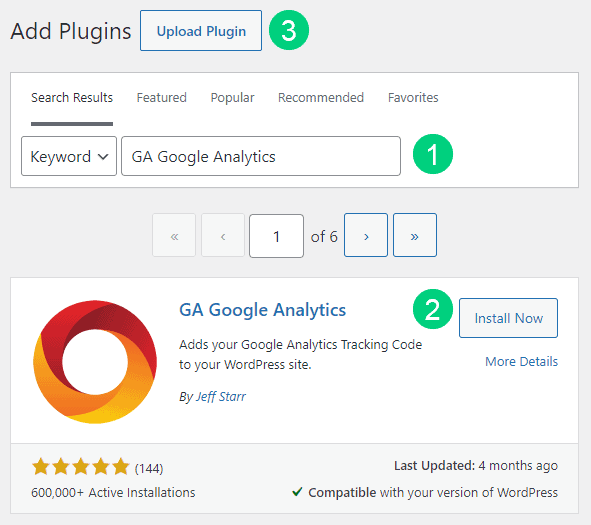
There are many different plugins that you can install, but here are the ones which we recommend:
Backup Plugin: A WordPress Backup Plugin helps you to easily create backups of your WordPress website. This is very important in case your website gets hacked or crashes.
Recommended Plugin: WPVivid (paid) or UpdraftPlus (free).
SEO Plugin: A WordPress SEO Plugin helps you to improve the search engine ranking of your website. It allows you to easily add metadata, keywords, and titles to your website pages.
Recommended Plugin: RankMath (paid).
Google Analytics Plugin: A Google Analytics Plugin helps you to track the traffic and performance of your website. It allows you to see how many people are visiting your website, where they are coming from, and what pages they are visiting.
Recommended Plugin: RankMath (paid) or GA Google Analytics (free).
Cache Plugin: A WordPress Cache Plugin helps speed up the loading time of your website. It stores a copy of your website’s pages and posts in a cache so that when someone visits your website, they can load the pages from the cache instead of having to generate them every time.
Recommended Plugin: WP Rocket (paid).
Page Builder Plugin: A WordPress Page Builder Plugin allows you to easily create custom pages and posts for your website. It gives you drag-and-drop tools to easily create custom layouts for your pages.
Recommended Plugin: Thrive Architect (paid).
Security Plugin: A WordPress Security Plugin helps to secure your WordPress website. It allows you to add security features to your website, such as two-factor authentication and malware scanning.
Recommended Plugin: Wordfence (free).
Social Media Plugin: A WordPress Social Share Plugin allows you to easily share your website content on social media platforms such as Facebook, Twitter, and LinkedIn.
Recommended Plugin: Easy Social Share Buttons (paid).
Customize WordPress
Once you have installed your theme and plugins, it is time to customize the wordpress blog platform:
Change Colors, Fonts & Spacing
You can set the font, colors, and spacing by going to Appearance > Customize in your WordPress dashboard. Premium themes like GeneratePress allow you to customize every aspect of your blog.

Check out our Blog Fonts & Typography guide to choose the right font and typography settings for your blog.
Add Your Logo
Get a logo designed for your blog from Fiverr. Then set the logo of your blog by going to Appearance > Customize in your WordPress dashboard. A logo is not required for a successful blog but it can definitely help appeal to your target audience.
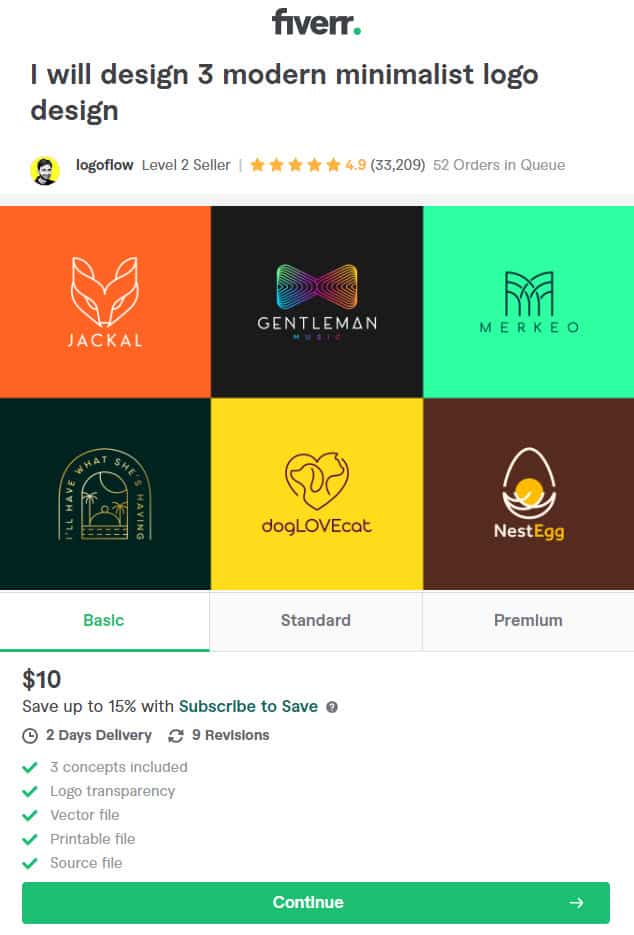
Change Favicon
Favicon is the image that appears in the browser tab and bookmarks. Set the Favicon from the Appearance > Customize section of the WordPress dashboard.

Create Menus
The header and the footer menu can be set from the Appearance > Menus in your WordPress blog dashboard.
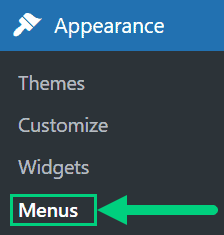
You can nest menu items so that it appears as a dropdown menu ❶. You can use the menu as your primary or secondary navigation menu ❷. Don’t forget to save your menu ❸.
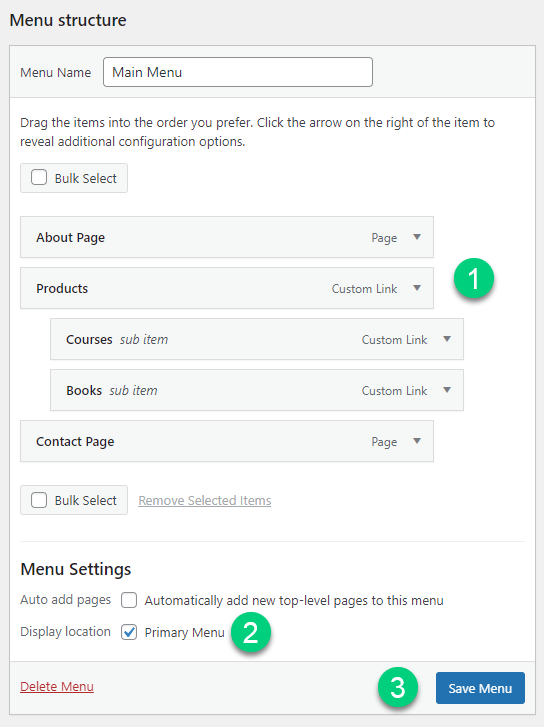
Create Widgets
If you have a sidebar, you can add widgets to it. Go to Appearance > Widgets in your WordPress admin dashboard.
Check out the list of the most useful Blog Widgets and how to add them to your blog.

Set Title & Tag Line
The next step is to change your General Settings. Go to Settings > General in the WordPress Admin area.
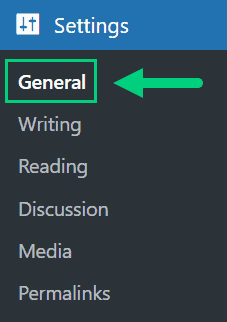
You can set your Site Title, Tagline, and Time Zone from this screen.
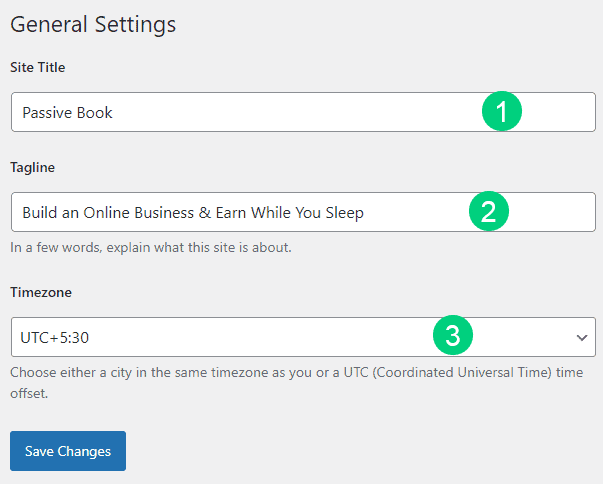
Set Permalinks
The ideal URL structure for SEO is yourdomain.com/sample-post. Set your permalink structure by going to Settings > Permalinks in your WordPress blog dashboard.

Select the “Post name” radio button and save changes.
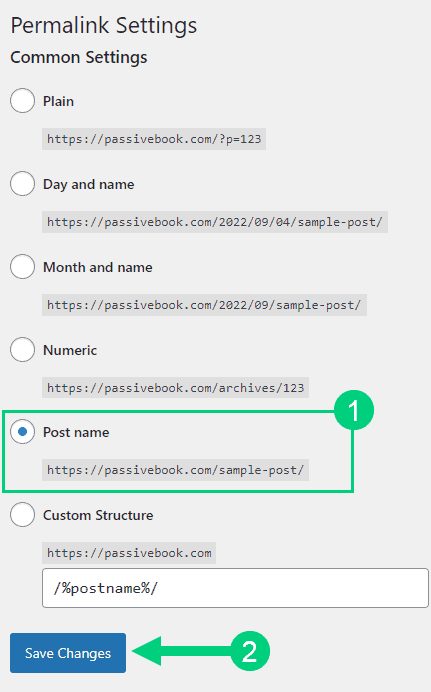
Enable Search Visibility
Chances are you want your blog to show up on Google so people can find you. Go to Settings > Reading in your WordPress dashboard.
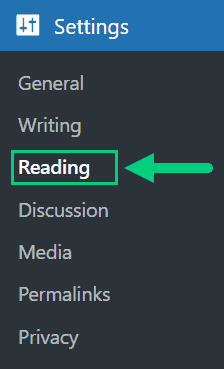
To get search engine traffic, ensure the checkbox “Disable search engines from indexing this site” is Unchecked. You can find this option in Settings > Reading. Most of the time this should be unchecked by default but if it is not, then uncheck it to ensure your site gets traffic from search engines.
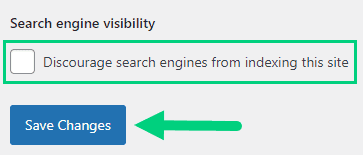
Adjust Comment Settings
Next, you will want to change the Discussion Setting (aka Comments). Go to Settings > Discussion in your WordPress admin area.
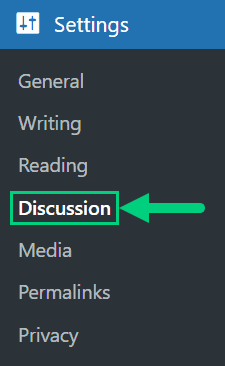
❶ You may want to enable or disable comments on this page. You can also disable pingbacks and enable comment moderation.
❷ You can also set comment approval settings.
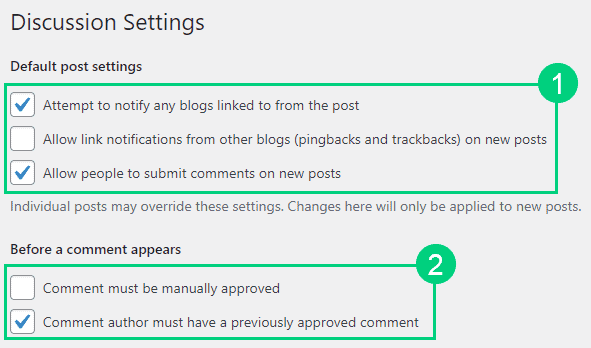
If you want to design your blog further, check out our dedicated guide on blog design which has all our best blog design recommendations.
Create Static Pages
There are a few essential pages that you need to create for your beauty blog before you can start blogging.
Use pages in WordPress to add static content. Go to WP Dashboard > Pages > Add New.
- Write the headline of your content.
- Populate the body content
- Click the publish button.
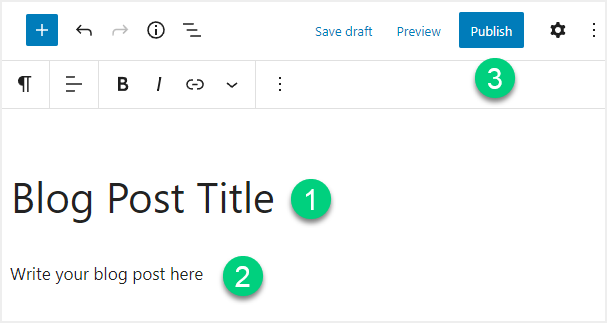
You may want to create the following pages:
Home Page
A home page is the main page of your website. It is usually the first page that a person sees when they visit your website. The home page typically contains a welcome message, links to your most popular pages, and a search bar.
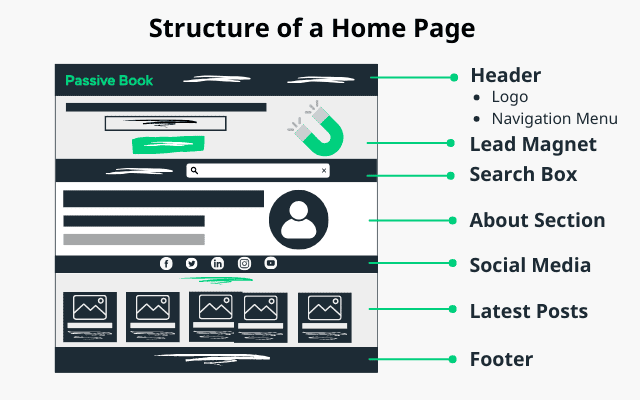
You can create a professional home page for your beauty blog using a page builder like Thrive Architect.
About Page
An about page is a page on your website that tells people who you are and what you do. It typically contains information about your background, your credentials, and your contact information.
The About page is one of the most important pages on your website because it helps people to understand who you are and what you do.
It is important to have an about page because it helps you to build trust with your audience.
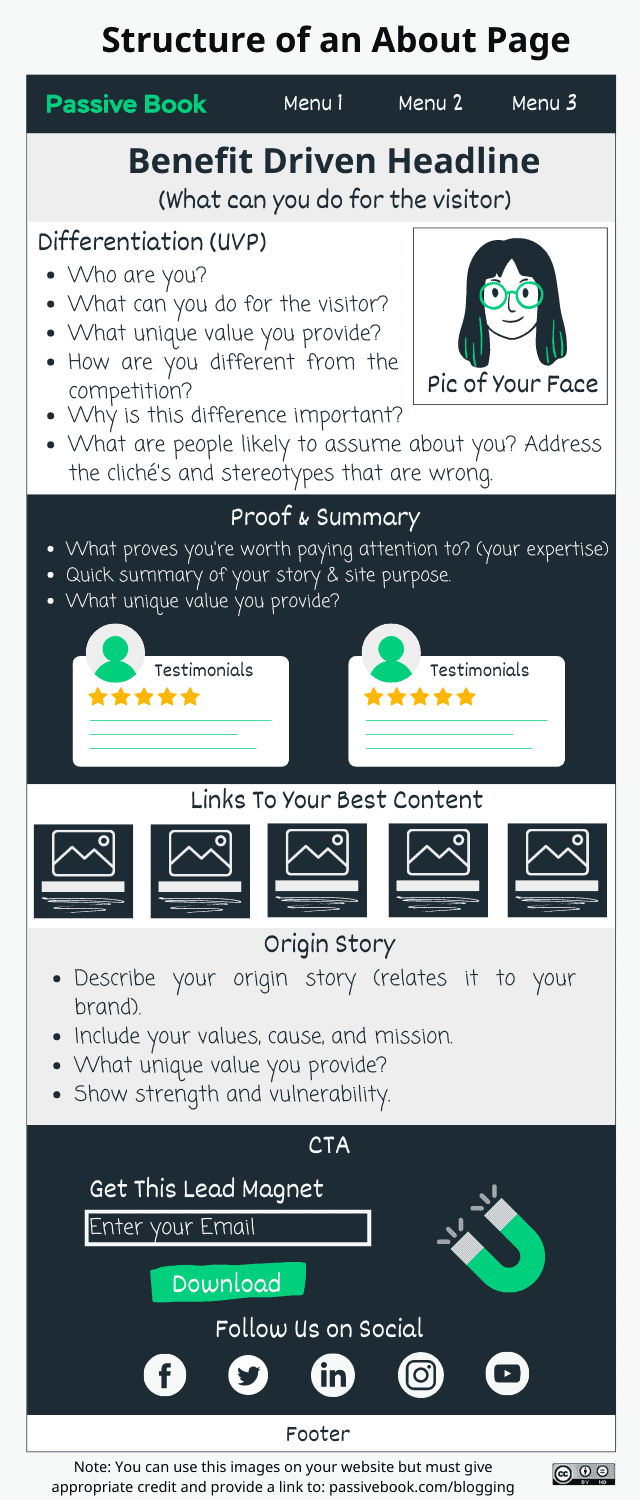
Contact Page
A contact page is a page on your website that provides people with a way to contact you. It typically contains your email address and your social media links.
The contact page is important because it allows people to get in touch with you if they have any questions or comments.
Use contact form plugins like Fluent Forms to create the form on your contact page.
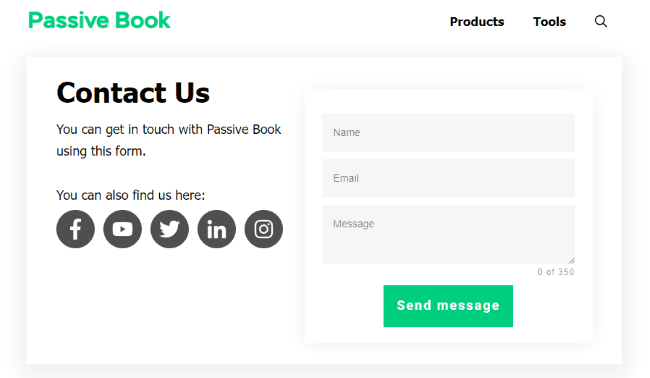
Privacy Policy
A privacy policy page is a page on your website that tells people how you use their personal information. It typically contains information about what information you collect, how you use it, and how you protect it.
The privacy policy page is important because it helps you to build trust with your audience.
WordPress generates its own privacy policy for you. But you can also use a tool like Termly to generate your own privacy policy.
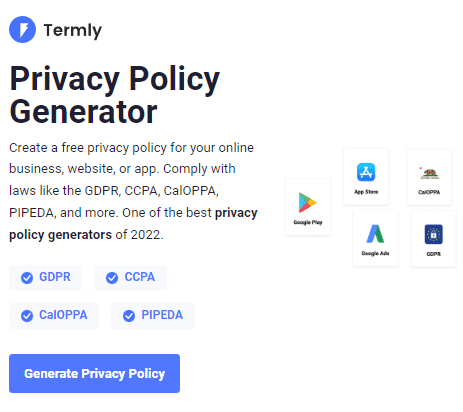
Terms of Service
A terms of service page is a page on your website that sets forth the terms and conditions under which people can use your website. It typically contains information about what people can and cannot do on your website, and what you are not responsible for. The terms of service page are important because it helps to protect you from liability.
Use a terms & conditions generator like Termly to create it.
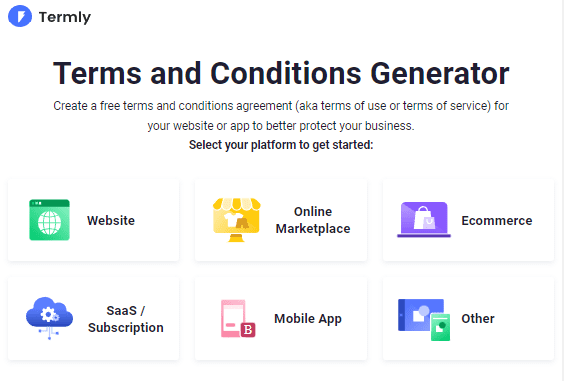
5. Write & Publish Blog Posts
Now that you have your beauty blog set up, it’s time to write and publish your first blog post.
1. Brainstorm Topics
You should brainstorm 100 topic ideas for your beauty blog. This will ensure that you always have content to write about in your beauty blog.
The goal is to find blog post ideas for your beauty blog that your audience is searching for in Google. The type of content you write on your beauty blog will depend on your specific niche. You can potentially cover the following topics on your beauty blog:
- Product Reviews
- Beauty Tips
- How-To Guides
- Wish List
- Shopping Guides
There are a few ways to brainstorm specific content:
Look at Competitors
You can look at other blogs in your niche to get ideas for content. To find your competitors, simply google keywords related to your niche and look at the websites that rank on top. Try to find blog posts of your competitors that are doing well in Google and see if you can write a similar article but with a different angle.
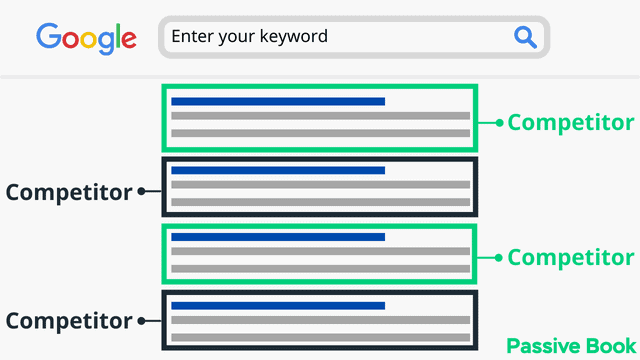
Do Keyword Research
Use Keywordtool.io to find keywords related to your niche. You can use these keywords to write blog posts that are optimized for search engines. You can use paid tools like Ahrefs to get better results.

Community & Forums
You can also join relevant communities and forums to see what people are talking about in your niche. This is a great way to find content ideas that are relevant to your audience. For example, every post in the Caveman forum can become an article in a paleo blog.

2. Create an Editorial Calendar
Once you have a list of content ideas, it’s time to create an editorial calendar. This will help you to plan and organize your content.
Download Content Calendar Template

Steal our exclusive content calendar template. Have it delivered directly to your inbox:
An editorial calendar is simply a document that contains a list of all the blog posts you plan to write and publish on your website. It typically includes the following information:
- Title
- Topic
- Keywords
- Publish Date
You can create an editorial calendar in a spreadsheet like Google Sheets or a tool like Asana.
3. Write a Blog Post
Now it’s time to write and publish your first blog post. We have an in-depth guide on How to Write A Blog Post. Here we will go over specific tips for a beauty blog.
Write 5x Faster With AI
You can write your new blog post at 5x speed using the AI writing software Jasper. I was able to write over a hundred blog articles in 3 months using Jasper. This blog article you are reading right now was written with the help of Jasper. AI will not only help you write blog posts fast but also with higher quality.
Jasper can write plagiarism-free blog content, articles, social media content, emails, and ad copy. All you have to do is provide a few inputs on what you want and Jasper will do all the hard work of creating the blog content for you. No more writer’s block.
Check out the video below to see Jasper in action:
Try Jasper for free using the links on this page and get 10,000 bonus credits you can use to start writing your first articles.
Once you sign up for Jasper I recommend you spend some time going through the tutorial videos in the Jasper Bootcamp to truly unlock the power of this amazing software.
Check out our guide on How to Write a Blog Post Fast in 15 mins Without Losing Quality for more tips to write fast.
Writing Product Reviews
If you’re writing product reviews, then you should focus on writing an unbiased review of the product. You should include information about what the product is, how it works, and your personal thoughts on the product.

You should also include photos and videos in your review. This will help to engage your readers and give them a better idea of what the product looks like.
If you’re writing a negative review, then you should be sure to include information about any alternatives that you recommend.
Here are a few examples of beauty product reviews:
- NYX Makeup Butter Gloss Review
- MAC vs. NARS Foundation
- Glossier’s Revamped Eyeliner Review
Writing How-To Guides
Another common type of beauty blog post is a how-to guide. If you’re writing how-to guides, then you should focus on providing clear and concise instructions. You should also include photos and videos to help illustrate the steps.
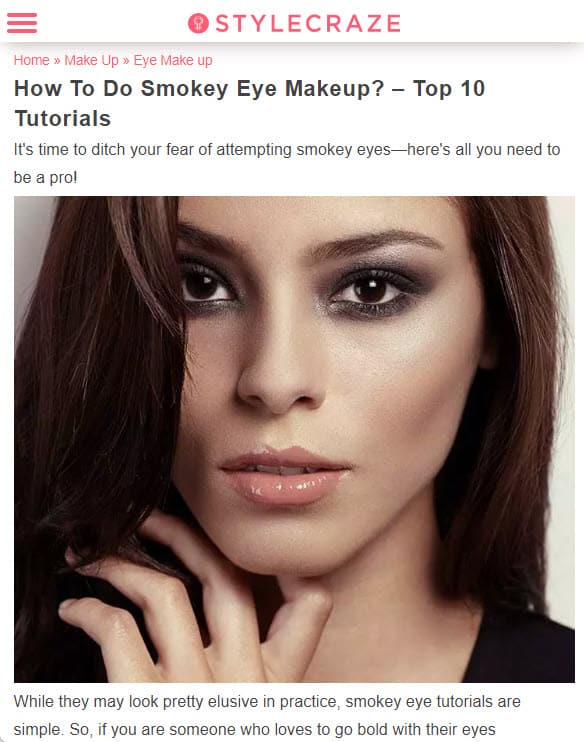
It can be helpful to write your how-to guide from the perspective of someone who has never done it before. This will help to ensure that your instructions are clear and easy to follow.
Examples of How-to Guides:
- How to get perfect skin
- How to do a smokey eye
- How to contour like a pro
Writing Shopping Guides
If you’re writing shopping guides, then you should focus on giving your readers the best possible advice. You should include information about where to find the best deals, what to look for when shopping, and any other useful tips.
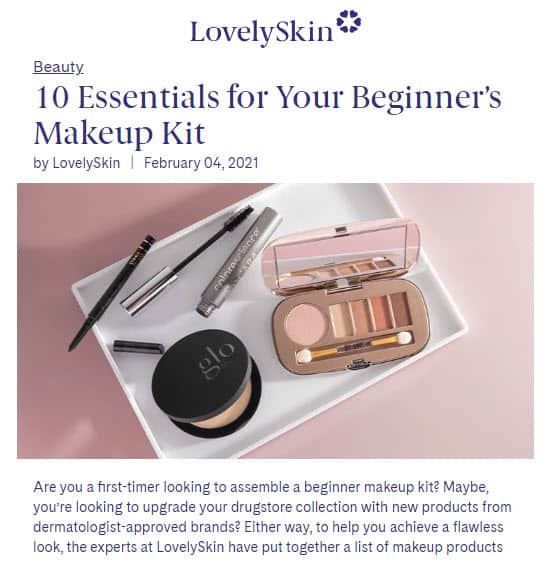
You should also include photos and videos in your shopping guides. This will help your readers to visualize what you’re talking about.
Examples of Shopping Guides:
- 10 must-have products for a beginner’s makeup kit
- Luxury beauty shopping guide
- The ultimate guide to drugstore beauty products
List Posts
When it comes to beauty blog posts, lists are always popular. But what makes a good list post? Here are some tips to help you write list posts that will be popular with your readers.
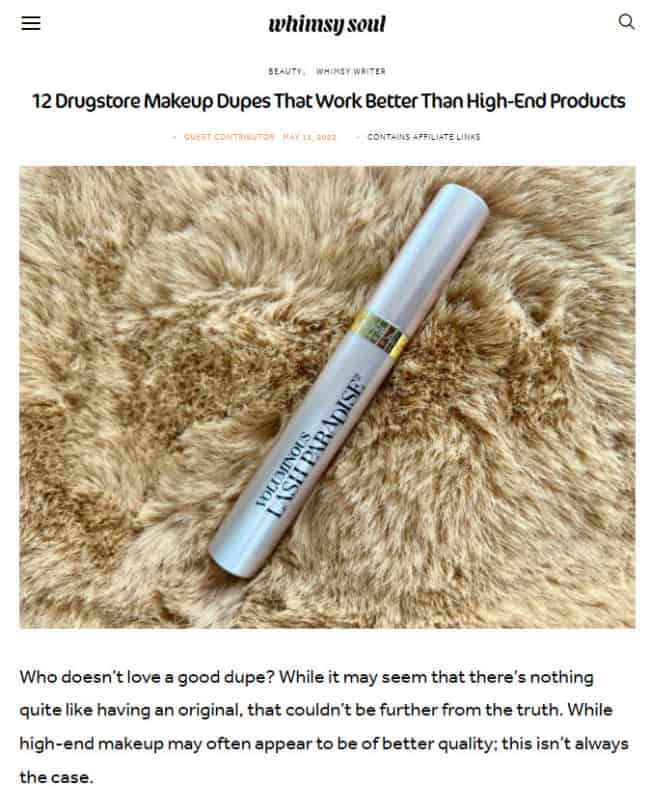
Keep it relevant: Your list should be relevant to your blog’s focus on beauty. For example, if you blog about makeup, you could write a list of the best drugstore foundations for oily skin.
Make it comprehensive: A good list post will cover all the bases. If you’re writing about the best mascaras for sensitive eyes, make sure to include options for both drugstore and high-end products.
Be informative: In addition to listing the products, explain why they made your list. What sets them apart from other products in their category?
Use quality photos: For every item in your list have a good photo that illustrates the list item.
Examples of beauty blog posts:
- 3 Unexpected Benefits of Wearing Makeup
- Top 10 Natural Beauty Products That Work Wonders
- 12 Drugstore Dupes for High-End Beauty Products
Beauty Trends
Beauty trends is a popular type of article in successful beauty blogs.

However, if you are just starting out, it can be difficult to spot beauty trends. Here are a few tips for how to write blog posts on the latest beauty trends:
Do your research: Before you start writing, make sure you have a good understanding of the trend you’re covering. This way, you can provide accurate and helpful information in your post.
Keep it concise: When it comes to beauty trends, people usually want to know the basics: what is it and how can they try it out themselves. So, make sure your blog post is clear and to the point.
Use visuals: People are visual creatures, so incorporating images or videos into your post can really help bring the trend to life for your readers.
Include a call to action: Whether it s a link to a product page or an invitation to comment, make sure you ask readers to take some sort of action after reading your post.
Examples of Beauty Trends Posts:
- 7 Hottest Beauty Looks for Spring
- 10 New Highlighter Trends That Will Up Your Glow Game
- The Latest Makeup Trends You Need to Know
Beauty Tips & Advice
Another popular article type is beauty tips and advice in your blog. You can share some essential and useful beauty, skincare, haircare, makeup, or fashion tips, advice, and hacks.

Here is how you can write awesome advice and tips posts.
Pick a focus for your beauty blog post. For example, you could write about skincare routines, makeup trends, or hair styling tips.
Do some research on your chosen topic. This could involve reading articles, watching videos, or consulting experts.
Create an outline for your blog post. This will help you organize your thoughts and ensure that your article is cohesive.
Write your blog post. Be sure to include any helpful tips or tricks that you’ve learned.
Use images. A picture is worth a thousand words, so make sure to include helpful photos or illustrations along with your text. This will help your readers understand your tips and tricks better.
Examples of Beauty Tips & Advice:
- 3 Simple Hacks For Glowing Skin
- 5 Minute Makeup Routine for Busy Mornings
- Top 5 Tips to Up Your Beauty Game
Outsource Writing
If you don’t have time to write your own blog posts, you can always outsource the writing to someone else. There are many sites where you can find freelance writers, such as Upwork and Fiverr.
Just be sure to give them clear instructions and edit the article before publishing it on your website.

4. Use Images
Make sure to use images and videos in your blog posts. This will help to engage your readers and make your posts more visually appealing.
Use jpeg file format for images and png for graphics.

When choosing images, be sure to use high-quality photos that are relevant to your topic. Try to take your own pictures using a smartphone or DSLR camera.
If you can’t take your own pictures, you can use stock photos. There are both free and paid options:
Free Options: Pixabay, Pexels, Upsplash
Paid Options: Deposit Photos, Shutterstock, iStock, Getty Images, 123rf.
You can edit your images in Canva. If you get Canva Pro then you will have access to even more editing features and a large library of stock images.

6. Promote Your Beauty Blog
Once you’ve published your blog post, it’s time to promote it. There are several ways that you can promote your content to get blog traffic:
Search Engine Optimization (SEO)
One of the best ways to promote your blog post is to optimize it for SEO. This means including your target keywords in your title, headings, and throughout the body of your article.
Many factors go into SEO, and it can be a bit confusing to figure out where to start. You can master the more advanced SEO tactics by checking out our SEO Resources.
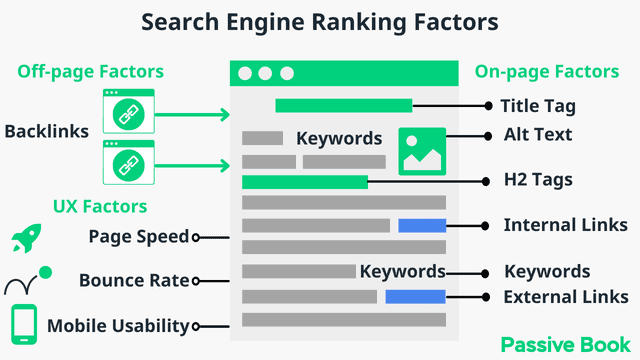
You can ensure you get the basics of SEO right, by completing the recommendations given by the RankMath plugin.
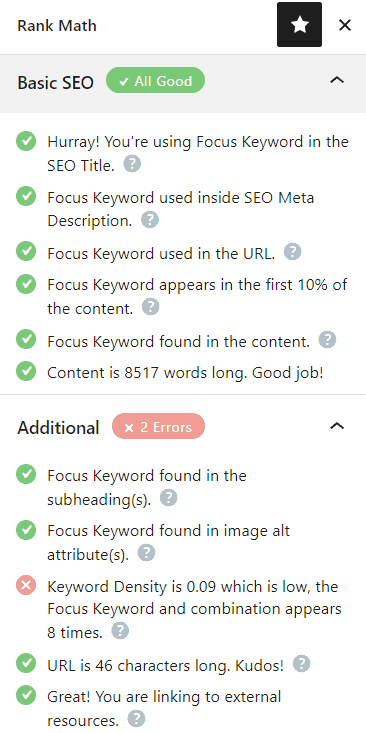
Email Marketing
Email marketing is a great way to promote your blog posts to your subscribers. To build an email list, you need to create opt-in forms and connect them to email marketing software.

You can use the Thrive Leads plugin to build opt-in forms to collect email addresses. You can then connect the opt-in form to an email marketing service like Active Campaign to send out the emails.
Check out our Email Marketing resources to learn more.
Social Media Marketing
Make sure to share your blog post on social media. This will help to increase its reach and get more people to read your content. You can use a tool like SocialBee to help you manage your social media accounts. Beauty bloggers do well if they focus their efforts on Pinterest, Instagram, and TikTok.
Guest blogging
Guest blogging is a great way to get your content in front of a new audience. You can write guest posts for other blogs in your niche. This will help to increase your reach and attract new readers to your site. You can also promote and link back to your blog from your author bio.
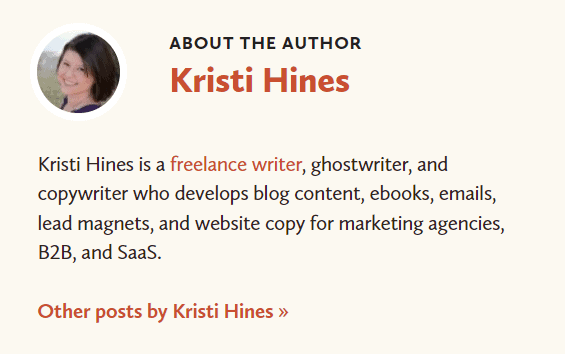
7. Monetize & Make Money
Now it’s time to start making money from your blog. There are many ways that you can do this:
Advertising
One of the simplest ways to make money from your blog is to use advertising. You can do this by signing up for an ad network. Once you’re approved, you can start displaying ads on your website and earning money whenever someone clicks on them.
To start advertising on your blog, you can sign up for an ad network like Ezoic (they pay more than Google Adsense). When your blog starts getting more than 100,000 page views a month you can monetize with Adthrive.
| Ad Network | Earnings Per 1K Impressions (EPM) | Monthly Traffic Requirement |
|---|---|---|
| Ad Thrive | $13 | 100,000 |
| Ezoic | $3 | 10,000 |
| Media.net | $1 | – |
| Google Adsense | $1 | – |
Affiliate Marketing
One of the best ways to make money from your blog is through affiliate marketing. This is where you promote products and services on your website and earn a commission for every sale.
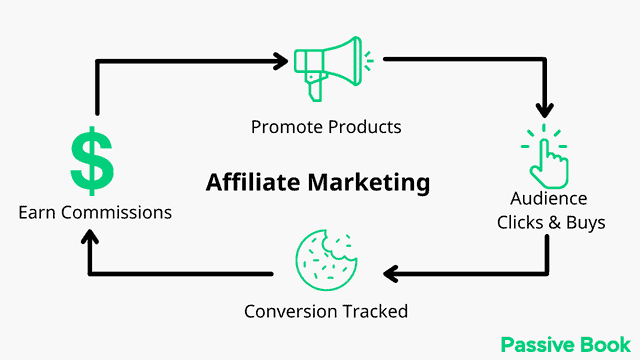
For example, if you’re a beauty blogger, you could promote makeup products on your site and earn a commission for every sale that you generate.
There are many affiliate programs that you can join, such as Amazon Associates and Commission Junction.
Sell Products
Another way to make money from your blog is to sell products. This could include things like e-books or online courses.
If you have a lot of knowledge about a particular topic, you could create an e-book or online course to sell on your blog. This is a great way to monetize your blog and make a passive income.
You can use Teachable if you want to sell video courses. Your students will have a dedicated course members area and a community system to ask questions and interact with each other. If you only want to sell eBooks, you can use SendOwl which lets you sell your digital products and eBooks for free.
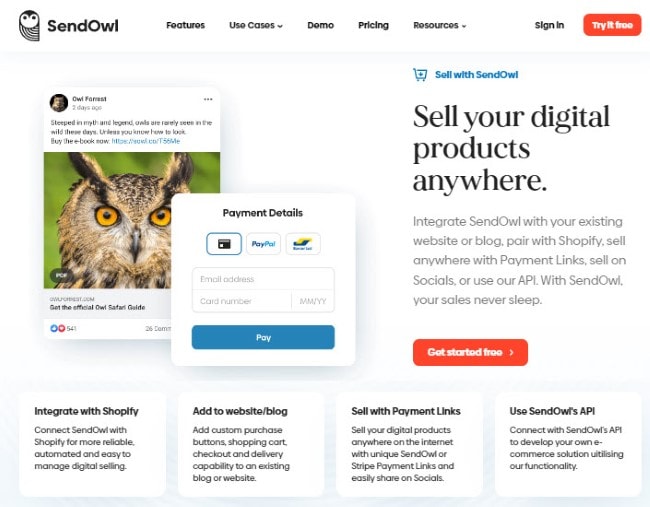
Consulting & Selling Services
If you have a particular skill or talent, you could sell services on your blog. For example, if you’re a makeup artist, you could sell your services to people who need help with their makeup.
As a beauty consultant, you can help your clients improve their physical appearance and self-esteem. In addition to giving advice on clothes, hair, and makeup, you can also recommend skin care products, offer tips on diet and nutrition, and provide guidance on choosing the right exercise program.
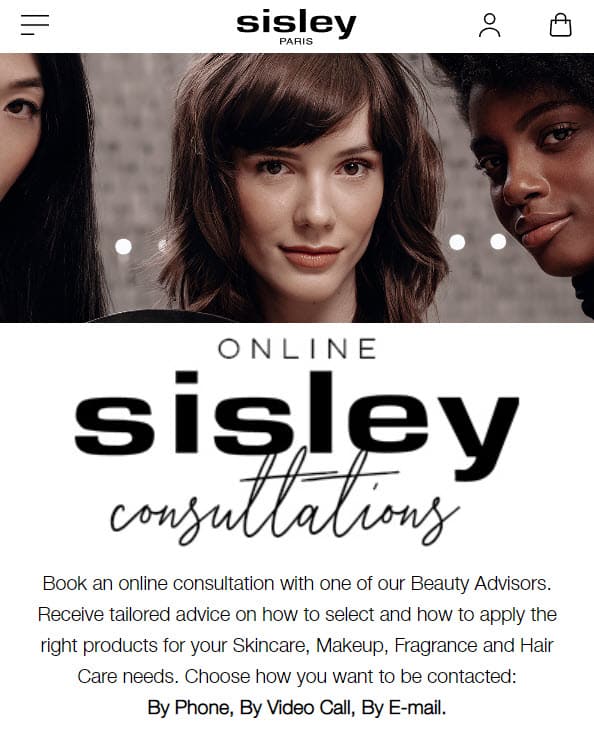
As an image consultant, you can work with individuals or businesses to create a positive public image. You may advise clients on what to wear for specific occasions, help them select the right colors for their skin tone, and teach them how to apply makeup. You can also help clients choose the right hairstyle and jewelry to complete their look.
Sponsored Posts
You can also make money by writing sponsored posts for brands. This is where a brand pays you to write a post about their product or service.
This is a great way to monetize your blog if you have a large audience. Brands will be willing to pay you more if you have a large number of followers.
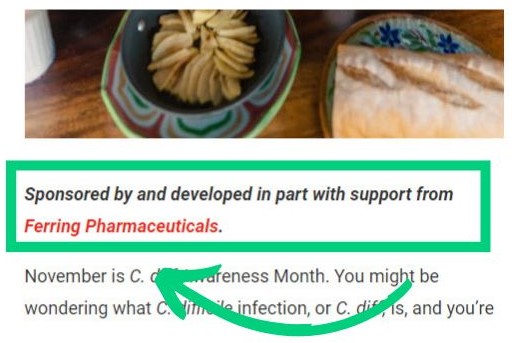
FAQ
What do you talk about in a beauty blog?
There are many topics that you can discuss on a beauty blog. This could include makeup tips, skincare advice, hair care tips, and product reviews.
Do beauty bloggers get paid?
Yes, beauty bloggers can get paid. There are several ways that you can monetize your blog, such as selling advertising space, affiliate marketing, and sponsored posts.
How do I make my beauty blog popular?
There are many things that you can do to make your blog popular. This includes creating high-quality content, promoting your blog on social media, and guest posting on other blogs. You should also focus on building an engaged community around your blog.
How long does it take to start a successful beauty blog?
It takes time and effort to start a successful beauty blog. You need to focus on creating high-quality content and promoting your blog on social media and other platforms. It can take months or even years to build a large enough audience to make your blog popular.
What Next?
Now you know how to start a beauty blog and make money online in 2026. Follow the steps above and you’ll be well on your way to becoming a successful beauty blogger who makes money.
If you have any questions as you set up your new blog, leave a comment below so we can help you out.
Have you started your beauty blog yet? What type of beauty blog are you going to start? Let us know in the comments.
Share this post with your friends & followers:
